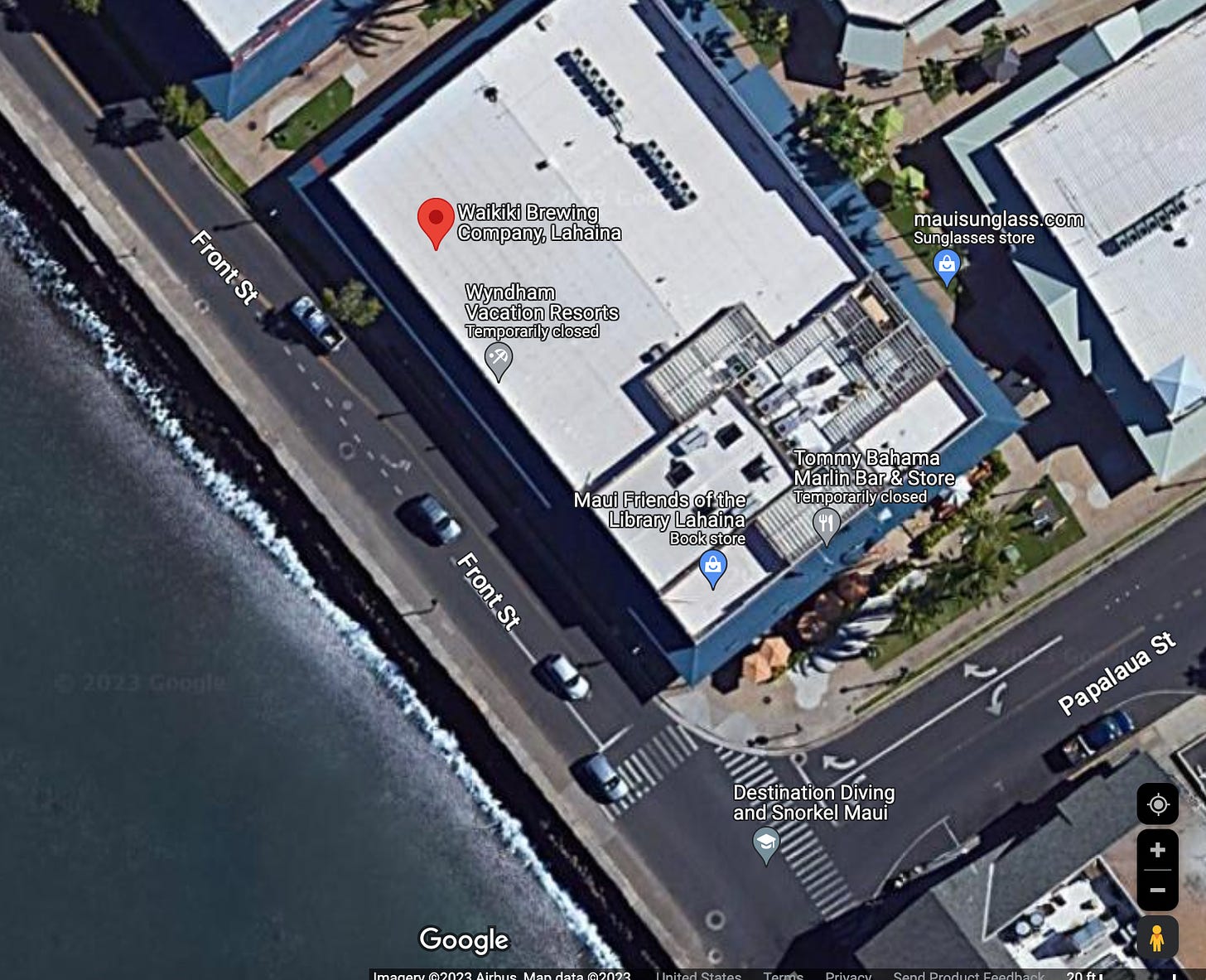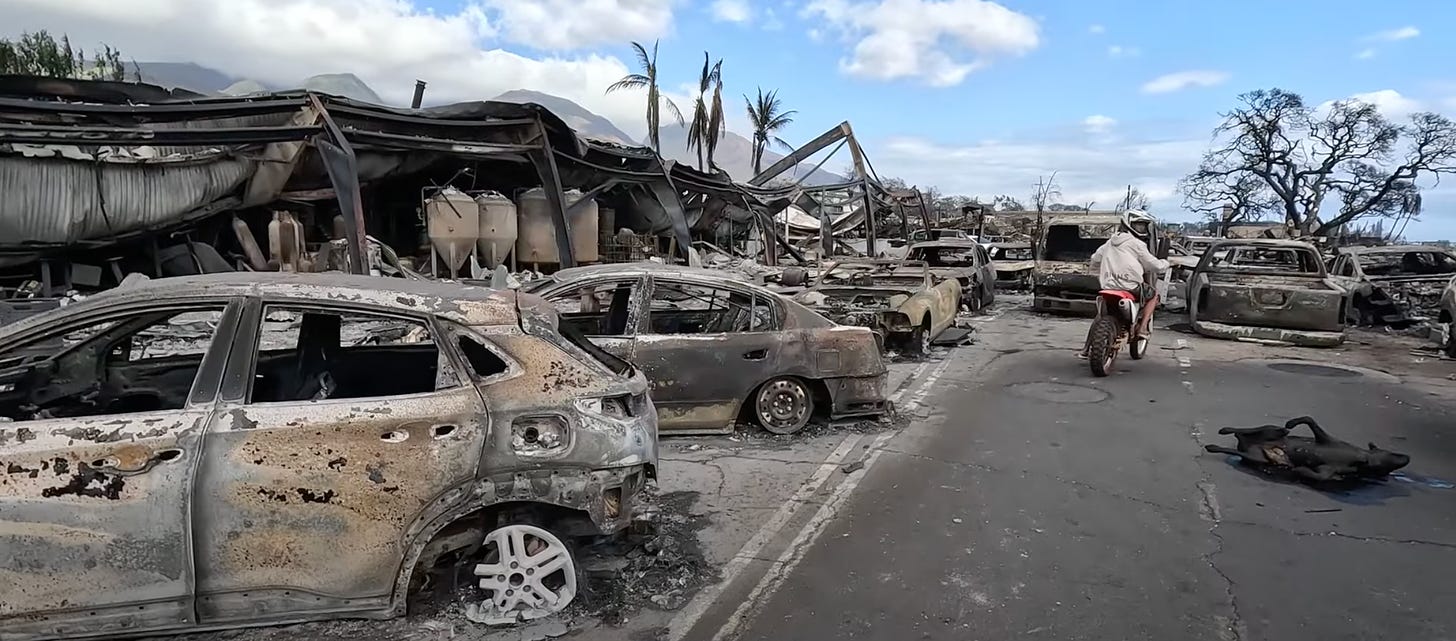Fire Destruction Patterns
Wind direction, fuel & humidity.
I continue to receive questions from readers about the blue umbrellas in front of Tommy Bahama on Papalaua Street. In my earlier posts I emphasized that the umbrellas (as well as the tables and coconut palm trees) next to the sidewalk were NOT composed of readily combustible materials, and I speculated that the umbrella material was treated with flame-retardant.
While I remain confident that the umbrellas, tables, and palm trees were not composed of readily combustible materials, in my review this morning, I would like to place greater emphasis on the location of these objects. With the wind blowing out of the east, towards the ocean, the area next the street and sidewalk was not downwind of a burning structure. Papaluau Street and the small green space with the coconut palms seem to have acted as a small firebreak.
The fire moved east to west (towards the ocean) through this building. By the time it reached the Waikiki Brewing Company, it was so hot that it caused the metal support structure to sag. The following is a photo of Front Street, just west of the Waikiki Brewing Company, which appears to have been one of the hottest regions of the fire.
All of the cars parked on Front Street, downwind of the building, got blasted by the fire blowing straight onto them, and their gas tanks eventually exploded, melting the aluminum wheel on the car in the foreground.
Just a few feet downwind, we see a dead dog that is charred but has not been reduced to ash, probably because of the water content of his body, and perhaps because his position (low to the ground) was below the hottest part of the fire, with rising superheated air.
Note that the (probably stainless steel) beer fermentation tanks of the Waikiki Brewing Company have retained their shape while the metal building supports are sagging.
In the left background we see the three coconut palm trees still standing on the south side of the building, in front of Tommy Bahama. On the right side of the picture we see a large tree that is still standing even though all of the buildings in its immediately vicinity were reduced to ashes.
Fire Destruction Patterns can be very puzzling, even to people who have spent years studying them. I just received an e-mail from a fire expert who graciously offered to help me with my research. On the topic of fire destruction patterns, he emphasized the role of moisture content:
The moisture content of wood in your house may be around 12%. The moisture content of a tree may be 200%. So the tree stays while the house goes. … Wood materials with MC > 50% are resistant to igniting from modest flames.




No comments:
Post a Comment